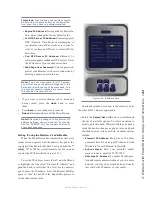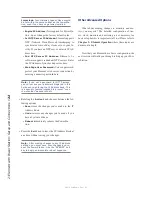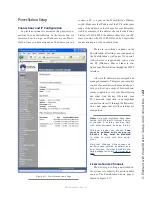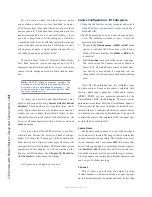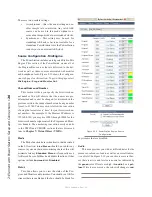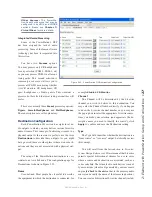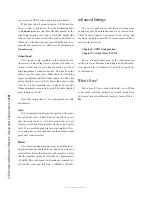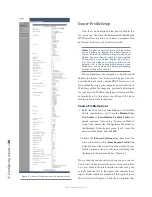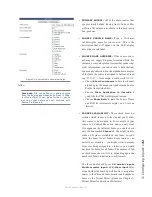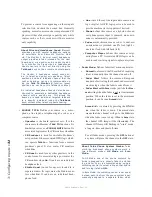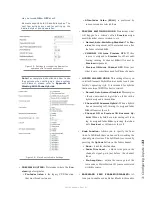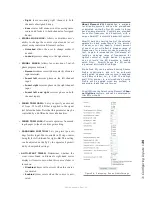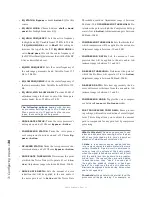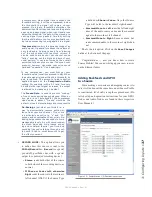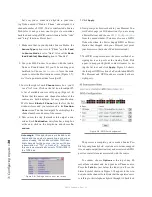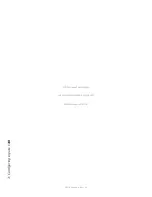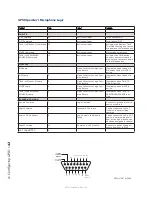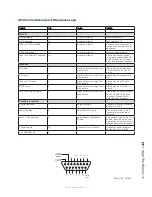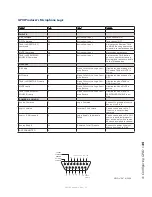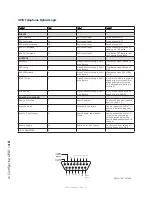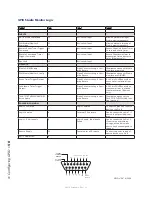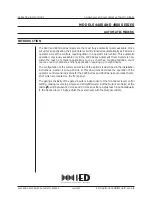
3: C
on
fig
uri
ng I
np
ut
s •
35
©2016 Axia Audio- Rev 1.8.1
»
Right
feeds incoming right channel to both
channels of assigned bus(es).
»
Sum
creates L+R mono mix of incoming stereo
source and feeds it to both channels of assigned
bus(es).
•
SIGNAL MODE LOCK:
Allows or disallows user’s
ability to change the source’s signal mode (as set
above) using controls on Element’s surface.
»
Unlocked
allows the user to change modes if
needed.
»
Locked
prevents changes to the signal mode.
•
SIGNAL PHASE:
Allows for correction of out-of-
phase program material.
»
Normal
assumes correct phase polarity of source
input material.
»
Invert left
reverses phase on the left channel
input.
»
Invert right
reverses phase on the right channel
input.
»
Invert left and right
reverses phase on both
channel inputs.
•
FADER TRIM GAIN:
Lets you specify an amount
of from -25 to +25 dB that is applied to the signal
just before the fader. Note that this parameter may be
controlled by a SoftKnob as described earlier.
•
FADER TRIM LOCK:
Prevents operators from mak-
ing changes to the above trim gain setting.
•
PANORAMA POSITION:
Lets you preset pan set-
tings for this input. Pan is variable in 49 steps, center
being
0
, far left
-24
and far right +
24
. This setting
can be adjusted on the fly by the operator if permit-
ted by show profile settings.
•
AUTO-START TIMER:
Determines whether the
event timer found in Element’s right-hand meter
display will reset to zero when this source’s fader is
turned on.
»
Disabled:
timer will not reset when this source
is activated.
»
Enabled
timer resets when the source is acti-
vated.
About Element EQ: Equalization is available
for all audio sources, and can be pre-defined
or adjusted on-the-fly. Our EQ model is three-
band quasi-parametric. Controls are provided
for center frequency and boost/cut, with a
unique SmartQ™ automatic bandwidth system.
SmartQ works by varying the Q of the selected
parametric band proportional to the amount
of boost or cut you specify. A small amount
of boost or cut will affect a broader range of
frequencies for a warm, musically-pleasing ef-
fect. As gain is increased the Q sharpens, af-
fecting a narrower range of frequencies for
tighter control of target bands. At aggres-
sive cut levels, the EQ becomes a tunable
notch filter. SmartQ keeps the EQ sound-
ing natural at virtually all settings.
Pre-defined EQ can be entered during Source
Profile construction, and will be automati-
cally applied whenever that source is assigned
to a Element fader; i.e., a -2 dB 12 kHz high
shelf filter pre-set in a microphone’s Source
Profile will be applied when any surface, in
any studio, loads that mic for use.
At-will EQ is set by talent using Element’s Chan-
nel Options controls, and can be employed to
trim EQ on-the-fly .
Figure 3-6: Processing- Source Profile Settings

